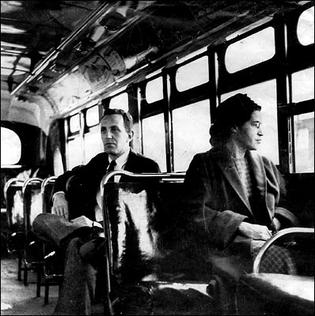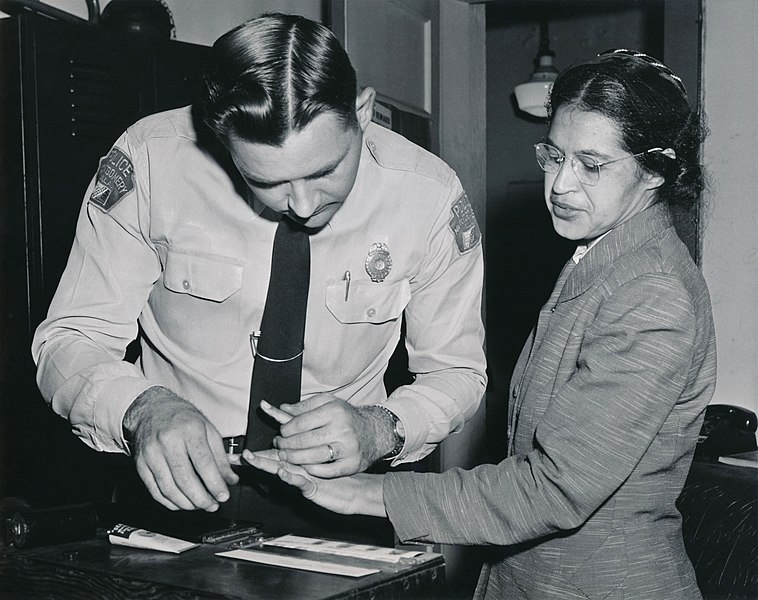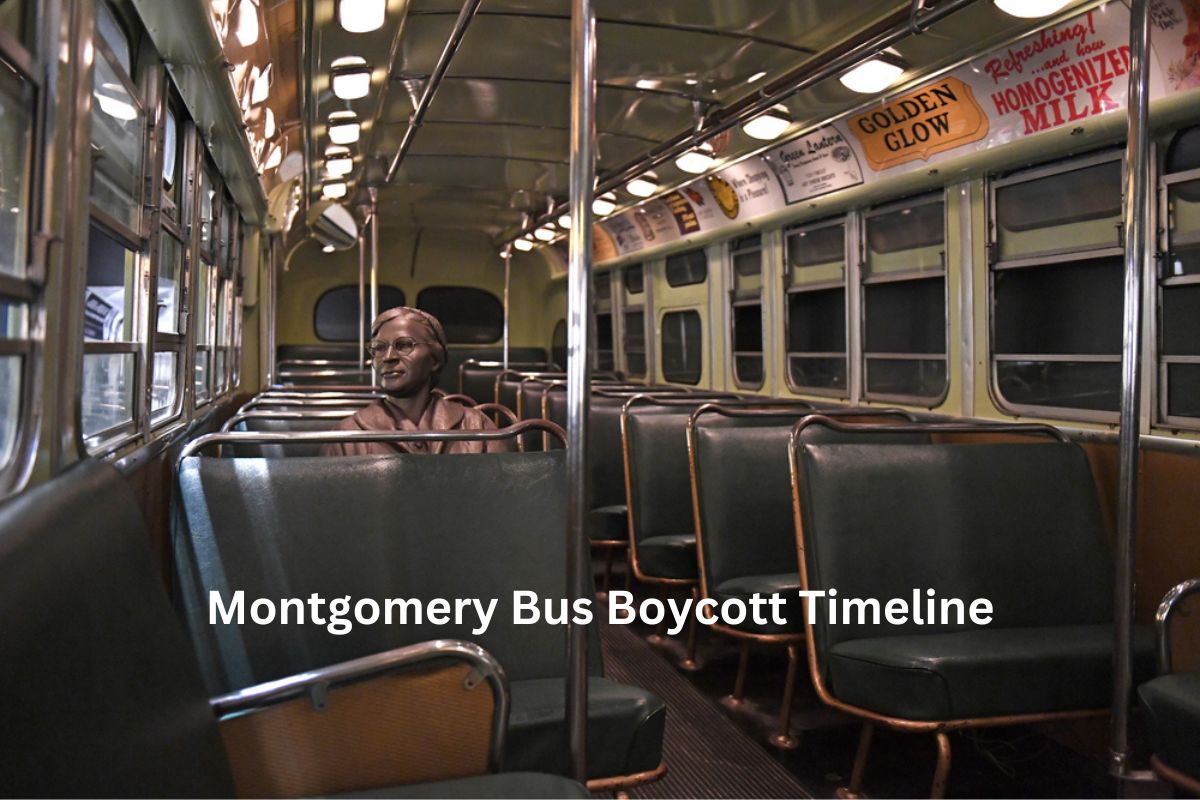The Montgomery Bus Boycott was a significant event in the United States Civil Rights Movement that took place from December 5, 1955, to December 20, 1956, in Montgomery, Alabama.
Sparked by Rosa Parks’ arrest after she refused to give up her bus seat to a white man, the boycott represented a major demonstration against racial segregation.
During the boycott, Black residents refused to use city buses, instead choosing to walk, cycle, carpool, or use Black-operated taxi services. This act of civil disobedience was highly effective, leading to severe financial difficulties for the bus company.
The Montgomery Improvement Association (MIA), led by the young pastor Martin Luther King Jr., was formed to coordinate the boycott.
Following the bombing of King’s home, and the successful Browder v. Gayle case, which challenged the constitutionality of Alabama’s bus segregation laws, the boycott ended with the U.S. Supreme Court ruling that segregation on public buses was unconstitutional.
The Montgomery Bus Boycott highlighted the potential of nonviolent protest in the Civil Rights Movement and elevated many figures, including King, to national prominence.
| Date | Event |
|---|---|
| December 1, 1955 | Rosa Parks refuses to give up her bus seat to a white man in Montgomery, Alabama, leading to her arrest and fine. |
| December 2, 1955 | News of Parks’ arrest circulates, and planning for a bus boycott begins among local civil rights leaders. |
| December 5, 1955 | The Montgomery Bus Boycott starts, with the city’s Black residents avoiding buses. Rosa Parks is tried and fined. The Montgomery Improvement Association (MIA) is formed to oversee the boycott, and Martin Luther King Jr. is elected its president. |
| January 30, 1956 | The home of Martin Luther King Jr. is bombed, but King and his family are unharmed. He continues to advocate for nonviolent resistance. |
| February 1, 1956 | A group of Black community leaders file a federal lawsuit (Browder v. Gayle) against Montgomery’s segregated bus system. |
| June 5, 1956 | The federal district court rules in favor of the plaintiffs in Browder v. Gayle, stating that racial segregation on Alabama’s city bus lines is unconstitutional. Montgomery appeals the decision. |
| November 13, 1956 | The Supreme Court upholds the lower court’s decision in Browder v. Gayle, confirming that segregation on public buses is unconstitutional. |
| December 20, 1956 | The official court orders reach Montgomery, ending the boycott the following day. The Montgomery Bus Boycott marks the first large-scale demonstration against segregation in the Civil Rights Movement and brings Martin Luther King Jr. to national prominence. |
Timeline of the Montgomery Bus Boycott
December 1, 1955 – Rosa Parks Refuses to Give Up Her Seat
Rosa Parks, a 42-year-old African American seamstress and an active member of the local chapter of the National Association for the Advancement of Colored People (NAACP), boards a city bus in Montgomery, Alabama, and takes a seat in the “colored section.”
Also Read: Events of the Civil Rights Movement
When the bus fills up and a white man boards, the bus driver demands that Parks and three other Black passengers give up their seats.
While the others move, Parks refuses. She is arrested for violating the city’s racial segregation laws. This act of civil disobedience would spark a major turning point in the Civil Rights Movement.

December 2, 1955 – Planning for the Bus Boycott Begins
As news of Parks’ arrest spreads, it stirs discontent within Montgomery’s Black community. A local Women’s Political Council (WPC), led by Jo Ann Robinson, responds by producing a leaflet calling for a one-day boycott of the city buses on the day of Parks’ trial (December 5). Copies of the leaflet are distributed throughout Montgomery’s Black community.
December 5, 1955 – The Montgomery Bus Boycott Starts and the Montgomery Improvement Association (MIA) is Formed
In response to the call, Black residents of Montgomery avoid the city buses en masse on December 5, instead walking, biking, carpooling, or taking taxis driven by Black drivers.
The boycott is extremely effective, with the buses around the city largely empty. Rosa Parks is found guilty of violating the city’s segregation laws on the same day and is fined $10 plus $4 in court costs.
Also Read: Segregation Facts
Later that evening, the MIA is formed to oversee the continuing boycott, and a relatively unknown 26-year-old pastor named Martin Luther King Jr. is elected as its president. In his role, King helps to galvanize the Black community and emphasizes a strategy of nonviolent protest.
January 30, 1956 – Bombing of Martin Luther King Jr.’s Home
Late in the evening, while King is at a mass meeting, his home is bombed. His wife, Coretta Scott King, and their infant daughter are at home but escape unharmed.
The bombing stirs up anger in the Black community, but King is able to diffuse the situation by urging the crowd to remain calm and adhere to the principles of nonviolence. This event highlights the significant personal risks civil rights leaders and their families faced during this time.
February 1, 1956 – Filing of Federal Lawsuit (Browder v. Gayle)
Fred D. Gray, a young Black attorney, and other lawyers representing Aurelia Browder and other plaintiffs file a federal lawsuit against Mayor William A. Gayle, the City of Montgomery, Alabama, Montgomery’s chief of police, the Montgomery City Lines (the bus company), and the bus driver who had Rosa Parks arrested.
The lawsuit, Browder v. Gayle, challenges the constitutionality of Montgomery’s and Alabama’s bus segregation laws.

June 5, 1956 – Federal District Court Rules in Favor of Plaintiffs in Browder v. Gayle
The three-judge panel for the United States District Court for the Middle District of Alabama, in a 2-1 decision, rules in favor of the plaintiffs, stating that racial segregation laws on Montgomery’s and Alabama’s public buses are unconstitutional, as they violate the equal protection clause of the 14th Amendment.
However, the court stays its mandate, essentially delaying the enforcement of its decision, pending appeal. Therefore, the bus segregation laws remain in effect for the time being, and the Montgomery Bus Boycott continues. This represents a significant legal victory for the Civil Rights Movement.
November 13, 1956 – Supreme Court Upholds Decision in Browder v. Gayle
The Supreme Court of the United States affirms the lower court’s decision in Browder v. Gayle, ruling segregation on public buses unconstitutional. This decision comes almost a year after Rosa Parks’ arrest.
The Supreme Court’s decision validates the stance of the boycotters and delivers a significant legal blow to segregation. However, due to a delay in the official court orders reaching Montgomery, the bus boycott continues for a few more weeks.
December 20, 1956 – End of the Montgomery Bus Boycott
The official court orders finally arrive in Montgomery from the Supreme Court, effectively desegregating the city’s bus system. The following day, December 21, 1956, the Montgomery Bus Boycott ends, having lasted for 381 days.
Rosa Parks is among the first to ride the newly desegregated buses. The boycott not only leads to a major victory in the fight against segregation, but it also propels many figures, such as Martin Luther King Jr., to national prominence. The success of the boycott and its nonviolent approach influences future civil rights strategies and protests
